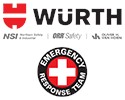
According to the National Oceanic and Atmospheric Administration (NOAA), hurricanes cause billions of dollars in damage and economic hardship each year. The larger the storm, the harder the emotional, physical, and structural recovery is, even for the most steadfast community.
A hurricane’s high winds, storm surge, and heavy rains cause devastating flooding, property damage, and utility outages. The US Department of Labor Statistics reports that over 40% of businesses that experience a disaster never reopen.
You can never fully know what impact a hurricane will have, but you reduce some of the challenges by planning ahead. Keeping an eye out for emergency alerts, developing a business recovery plan, readying your facility for damage, and communicating with your employees are proactive ways to reduce the burden.
Emergency Management Disaster Services Capabilities
State and local governments face the challenge of preparing for the potential loss of life as well as damage to property and the environment that can occur following a natural or man-made disaster. We provide comprehensive and cost-effective emergency disaster response management and services to our public sector customersDebris Management
- Demolition
- Debris pick up and sorting
- White goods and household hazardous waste collection & sorting
- Roll-off boxes, end dumps, knuckle boom trucks
- Vacuum pump trucks
Turn Key Mobile Housing
- Sleeping units
- Shower trailers
- Catering
- Laundry services
- HVAC
Tents with Flooring/Lighting
- Structured tents with subflooring
- Lighting
- Any sizes needed
Floating assets
- Deck barges
- Hopper barges
- Crane barges
- Landing crafts
Fuel and Water Support
- Storage tanks, pumps, and containment
- Potable and non-potable water trucks
Hazardous Spill Containment and Clean-up
Complete MRO & Safety Supply Offering
Many other services available as needed for response efforts

Plan
A thorough, written plan should explain evacuation and shutdown procedures, medical duties, contact information, alternate communications center, location of critical records, and communication methods.
Stay Alert
Don't be caught unaware. When storm warnings are issued, adhere to the corresponding instructions. Learn the differences between a Tropical Storm Watch, a Tropical Storm Warning, a Hurricane Watch, and a Hurricane Warning.
Data Back-Up
Your company's personnel, financial, and customer data is vital to your day-to-day operations. Don't risk losing it. Keep paper documents that you'll need in an emergency in one place so that they can be quickly and easily gathered. Create digital copies of documents and store them securely online. Copy your servers on a regular basis.
Property and Inventory Documentation
Keep a photo library of your facility and vehicles. Regularly inventory your supplies, products, office furntiure, electronics, etc. This information will help you assess loss, file insurance claims, or apply for recovery assistance.
Generator Usage
Practice caution when using generators. Never use them indoors or near an open window, as carbon monoxide poisoning can result.
Safe Driving
Do not drive through standing water. Even 6" of water is enough to stall most cars, and 12" of water is enough to wash away many vehicles.
Loss Assessment
When it is safe to reenter your workplace, take photos of your inventory/equipment/property losses and document the physical damages. File your insurance claims. Don't be afraid to seek help from FEMA or the American Red Cross.
Floodwater
Unfortunately, floodwater may contain insects, snakes, debris, gasoline, industrial waste, or raw sewage. Avoid injury and illness by not walking through it. If you come in contact with it, wash thoroughly with soap and clean water, or use alcohol-based sanitizer.
Clean-up
Clean hard surfaces with soap and water; then sanitize with a solution of one cup bleach to five gallons of water. Not all items touched by floodwater can be sanitized. Throw away any affected food, drywall, insulation, mattresses, and wooden cutting boards.




































